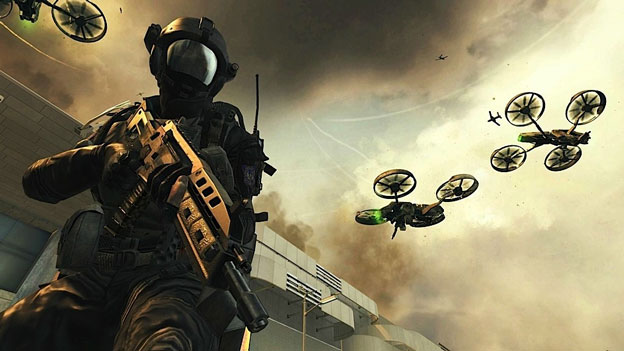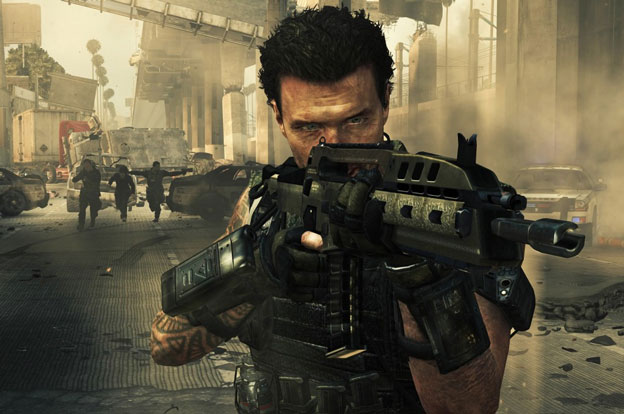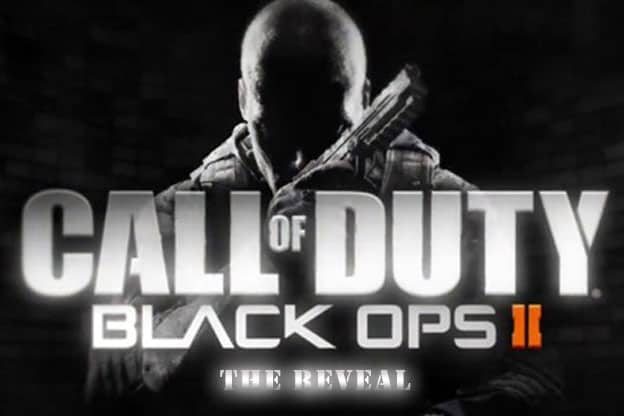The Open-Ended Nature Of Black Ops II
“The Future is Black.”
So blares the first trailer for the latest Call of Duty ( view the trailer here ), reminding players that, though Call of Duty: Black Ops was set during the Cold War, those “plausible deniability” missions are ever-present on the world stage. It’s appropriate, then, that Call of Duty: Black Ops II aims to be the first in its series to extend its action beyond the contemporary of Modern Warfare and, rather than stretch into the past, explore the possibility of warfare just over a decade into the future, in the high-tech, heavily automated world of 2025.
That isn’t to say that the new game will have no reverence for the past. Reports from an internal demonstration of the game have it that the main story will stretch across two eras and, though the primary action is set in the near-future of 2025, players can expect to control Alex Mason during the later years of the Cold War, in the late 1980s.

Yes, you read that correctly: Alex Mason. Call of Duty: Black Ops II is a direct, in-continuity sequel to Treyarch’s last Call of Duty game. The last game’s ending left a bevy of unanswered questions about its protagonist’s history and Call of Duty: Black Ops II appears ready to pick up those pieces and run with them. So ready, in fact, that even in the near-future campaign, players will find themselves, for the most part, behind the gun of David “Section” Mason, Alex’s son.
In the trailer, an aged Frank Wood theorizes that people like him, soldiers who are willing to fight and die for their country, will always be necessary because, even with the best in automated defenses, all it takes is for the enemy to gain control of those same things that are supposed to protect people to turn them into lethal weapons. His warning is accompanied by flashes of action that show unmanned drones running amok, bombing cities, destroying a civilian chopper over the highway. Further details from the Treyarch demonstration reveal that the man who has infiltrated the United States’ automated defense network is Raul Menendez, who aims to bring existing tensions between the U.S. and China (over the rare earth elements used in manufacturing advanced technology) to a boiling point. His motivations for this quest will be explored in the 1980s missions, particularly those set fighting proxy wars in Central America.
Most interesting, however, is the change Call of Duty: Black Ops II appears to be making to its series’ overall structure. Even as recently as in Modern Warfare 3, the complaint was levied against the single-player campaign that the action felt, overall, like a shooting gallery. Move from set piece to set piece, killing enemies in a linear hallway until they either stopped spawning or you had worked your way across the map to the next checkpoint. This was occasionally broken up by segments in which one controlled the guns on an AC-130 or engaged in some other momentary diversion, but the core gameplay had become fairly one-note and stale. While Black Ops II appears to come from the school of big production and massive explosions (and high-speed highway action, judging by the trailer—appropriate given its story has been penned by David Goyer, of Batman Begins and The Dark Knight fame), it also introduces an entirely new mode of gameplay that Treyarch has dubbed “Strike Force.”
Don’t let the generic sounding name fool you. Strike Force may be the single most revolutionary thing to hit Call of Duty’s single-player component since the first Modern Warfare’s “Shock and Awe” experience codified cinematic storytelling through gameplay. Strike Force missions are open-ended, sandbox battlefields that allow players to approach their objectives how they choose, including issuing orders to a squad of soldiers under their command. Strike Force missions will appear periodically during the campaign and, according to Treyarch, choosing one comes at the cost of the others, for that playthrough. This, in turn, leads to a branching storyline, especially since dying in a Strike Force mission leads to that character’s overall death in the campaign (presumably, Strike Force missions will not star David or Alex Mason).
Strike Force missions won’t be the only way the story and gameplay branch, either, with the player getting by-the-moment choices as to how they wish to proceed, whether providing support from afar or jumping headlong into the action. It seems it could fit well with what the trailer has shown thus far, which mostly shows fighting in the major urban sprawl of Los Angeles, including the aforementioned highway action and combat among shipping crates down at the docks. Such a tremendous, complex map just seems to cry out for freedom and experimentation, and it’s heartening to see that Treyarch appears to be answering that call in spades.
Along those lines, there appears to be an expanded emphasis on vehicle segments, which include both on-rails cinematic action and free-flying dogfights with drones in the city skyline. There’s also horseback riding, presumably in the 1980s segment of the game, down in Central America. What would truly be incredible—and there has yet to be any confirmation either way—would be a vehicular presence in multiplayer. Surely the controllable drones demonstrated in the trailer will make their way into the fray, but larger, more open maps with a higher player count and the addition of vehicles to drive or pilot? The introduction of freeform air combat, I feel, hints at this, as all previous Call of Duty vehicle segments have been mostly on-rails.

And, though the trailer was primarily a campaign-focused ordeal, Treyarch has come forward with details on the multiplayer, if only to say that they can’t say too much about it as of yet. We know that it will take place exclusively in the 2025 setting and that zombies will be making its return as the only planned, as of yet, co-op component. Other than that, though, Treyarch has decided that nothing is beyond reexamination, and is thus evaluating every element of Call of Duty multiplayer gameplay as it stands today.
It’s a new day and a new Call of Duty, one that finally looks to actually shake up the core gameplay, to which we’ve become so accustomed that it has become more a process of rote than one of pleasure. Treyarch’s willingness to rip apart what’s worked for them thus far, to take risks and challenge themselves to create an experience unlike what we’ve seen thus far, is admirable. We’ll see how it pays off when the game comes out on Tuesday, November 13.
 | By Shelby Reiches Contributing Writer  @Shelby_Arr @Shelby_Arr Date: May 2, 2012 |
*The views expressed within this article are solely the opinion of the author and do not express the views held by Cheat Code Central.*
